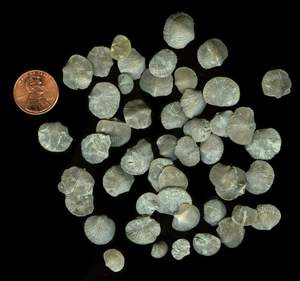
Photos by Bill Heimbrock, Mike Bonar and Cindy Striley. Words by Bill Heimbrock
Brachiopods
Unlike many sites further up in the Cincinnatian strata, this
Kope site did not have a lot of Brachiopods.
It did have huge quantities of two brachiopods, Cincinnetina multisecta
(pictured below) and Sowerbyella rugosa (not pictured).

However, as we rose toward the Fairview, we began seeing a few
specimens of the large Brachiopod, Rafinesquina.
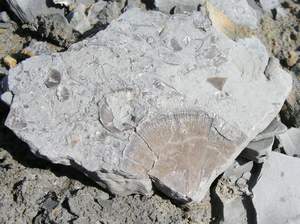
Among the inarticulate Brachiopods, we saw these proud Brachs
resorting to having attachments with common Bryozoans!
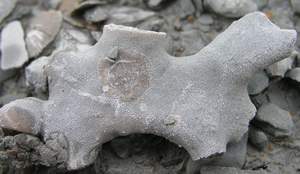
Trilobites
Flexicalymene
Yes! We found quite a few good quality trilobites, all of the
variety Flexicalymene and presumably most of them were of the
species, granulosa. Here are some pics.
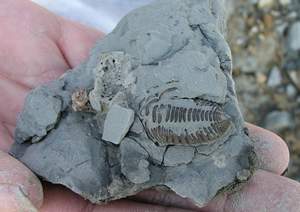
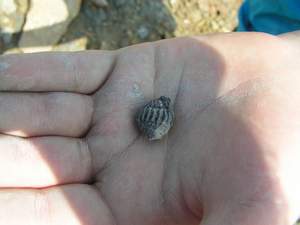
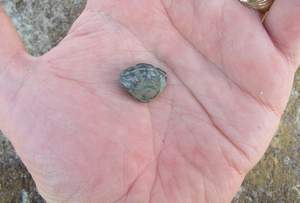
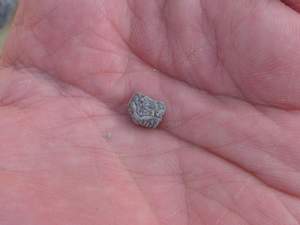
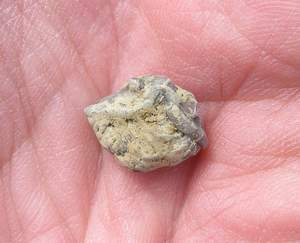
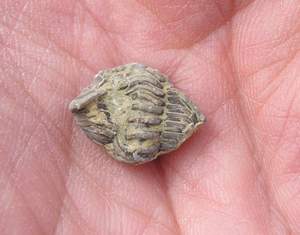
Isotelus
Sadly, all we saw of the majestic trilobite, Isotelus,
were fragments. Here's a nice one, so you
don't have withdraw symptoms.
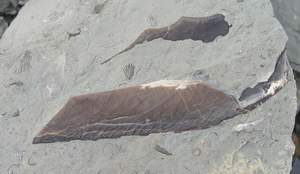
Ichnofossils
Every Cincinnatian fossil site with shale has trace fossils.
Although I was surprised how much of the shale had weathered away. It is a
relatively new site, but it was almost all harder fossil compactions. Still we
did find trace fossils. Here is a picture of some "dumbbell fossils"
called Diplocraterian I saw. These are worm burrows and sometimes, where they dug into the mud,
make holes at either end of their trace. This can turn into "U"
shaped burrows.
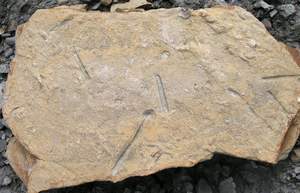
Another shale shape that sparked excitement for one member,
was this discolored shale that looked strikingly like an Isotelus trilobite
about to come to the surface. It was a lens-shaped object with cross ridges that
looked like trilobite thorax segments (more than 8, which would rule out
Isotelus). Next to it was another lens shape, sparking more excitement.
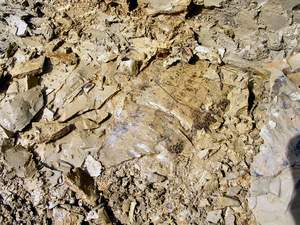
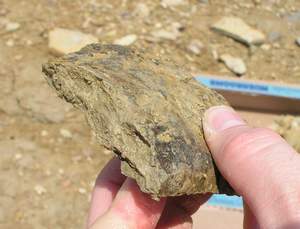
It's likely the mystery was solved though, when we found other
cases in the shale, with this same ridged or cuped pattern. Still exciting
though, it is the impression of the bottom of the Ordovician Ocean floor. A look
back in time at the wave action 450 million years ago!
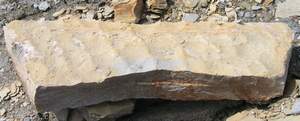
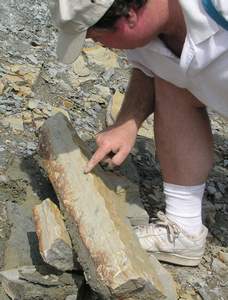
That's all we've got for this field trip. Thanks to Mike Bonar and Cindy Striley for additional Photos.
Join us for our next field trip on April 28, 2007
T A B L E O F C O N T E N T S
Page 1: The Site and Fossil
Hunters
Page 2: Fossils Found That Day: Best Finds - Echinoderms
Page 3: Fossils Found: Cephalopods, Bryozoans and Worm Tubes
Page 4: Fossils Found: Brachiopods, Trilobites and Ichnofossils
Previous Trips to the AA Highway
Back to the Dry Dredgers Home Page
The Dry Dredgers and individual contributors reserve the rights to all information, images, and content presented here. Permission to reproduce in any fashion, must be requested in writing to admin@drydredgers.org .